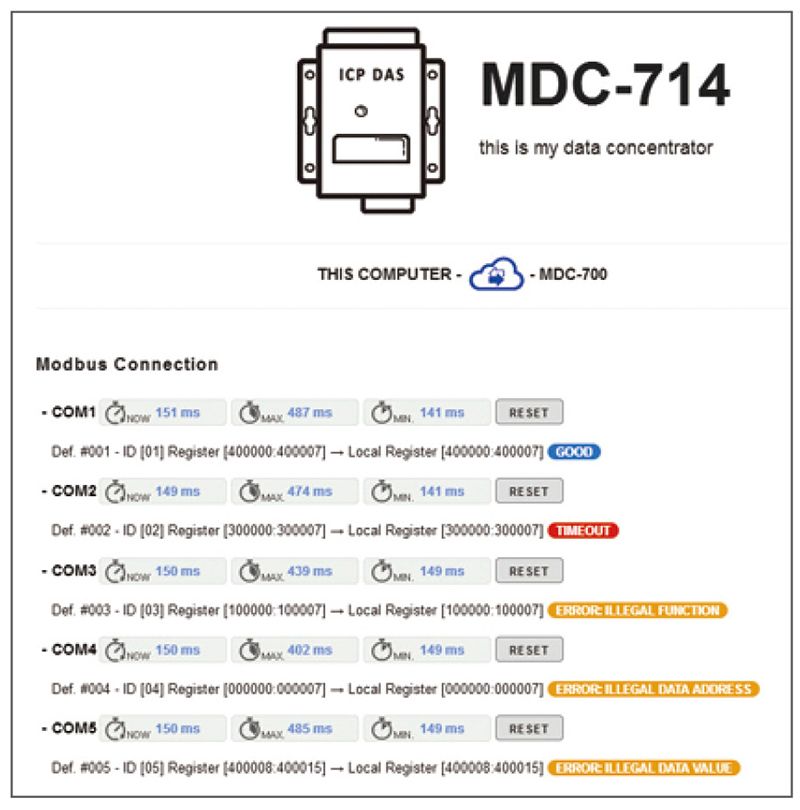
- #NO TRAFFIC WITH MODBUS POLL SLAVE SERIAL#
- #NO TRAFFIC WITH MODBUS POLL SLAVE CODE#
CAS Modbus Scanner (a Master application on Windows).Modbus poll (a Master application on Windows).There are a couple of alternatives that you can use to play with Modbus. MBTGET is a simple modbus/TCP client write in pure Perl. You can then query the Modbus instance with MBTGET.

It is a Java application that allows you to play with different slaves (registers and coils). You can use ModbusPal to simulate the behavior of a Modbus slave. If you setup a Modbus client remember that it can not have unit id 0! Modbus traffic Messages sent to 0 can be accepted by all slaves. The unit id of 0 can be seen as a broadcast address. In that case the unit id might have to be set to 255. In some cases however you will run into a situation where multiple devices are connected to one IP address (for example ‘bridges’). In most cases you don’t need a unit id because you already addressed the correct unit via its IP address. Unit identifiersĪ word on Modbus unit devices.
a holding register is a read/write type for longer values (16 bits), starting from 40001 to 49999 īe aware that, depending on the hardware implementation, sometimes the registers start at 0 and sometimes they start at 1. an input register is a read only type for longer values (16 bits), starting from 30001 to 39999. a discrete input is a read only type for booleans, starting from 10001 to 19999. It is read/write and starts from 00001 to 09999 a coil is used for storing simple booleans (1 bit). Each of these datastore types is a reference to a memory address. Each of these datastore types has two different types of registers : a read/write and a read only. There are two types of places where information can be stored : coils and registers. Most functions allow to read or write data from/to a PLC. #NO TRAFFIC WITH MODBUS POLL SLAVE CODE#
Function code : the function to execute. Unit identifier : the address of the slave (most of the time 255 because we already use the TCP/IP addresses as identifier). Length field : identifies the remaining length of the packet. Protocol identifier : always 0 for Modbus TCP. 
 Transaction identifier : to synchronize communication between devices. This post is based on the same video, together with some of my findings when I did the labs. I based my previous post with an Intro to PLCs, ICS and SCADA on a Black Hat 2014 presentation by Arnaud Soullié in a Industrial Control Systems : Pentesting PLCs 101. In TCP we often refer to the Master as the Client and to the Slave as the Server.
Transaction identifier : to synchronize communication between devices. This post is based on the same video, together with some of my findings when I did the labs. I based my previous post with an Intro to PLCs, ICS and SCADA on a Black Hat 2014 presentation by Arnaud Soullié in a Industrial Control Systems : Pentesting PLCs 101. In TCP we often refer to the Master as the Client and to the Slave as the Server. #NO TRAFFIC WITH MODBUS POLL SLAVE SERIAL#
In the serial world, the devices have to been connected in a daisy-chain manner, not in a star topology. You can have only one Master on a “Modbus” network and maximum 247 slaves, each with a unique slave ID.
Modbus RTU (uses binary encoding and a CRC error check). Modbus TCP (no checksum as lower network layers should include a checksum). For serial communication, Modbus ASCII and Modbus RTU are incompatible (meaning you have to use one or the other but not both on a network).Įvery Modbus variant has to choose a frame format: Other versions of Modbus (used in serial communication) are for example Modbus RTU and Modbus ASCII. Modbus is a clear text protocol with no authentication.Īlthough it was initially developed for serial communication it is now often used over TCP. 
This means the Master has the pull the information from a Slave at regular times. It is the most widespread used protocol within ICS. Modbus is a serial communication protocol.








 0 kommentar(er)
0 kommentar(er)
